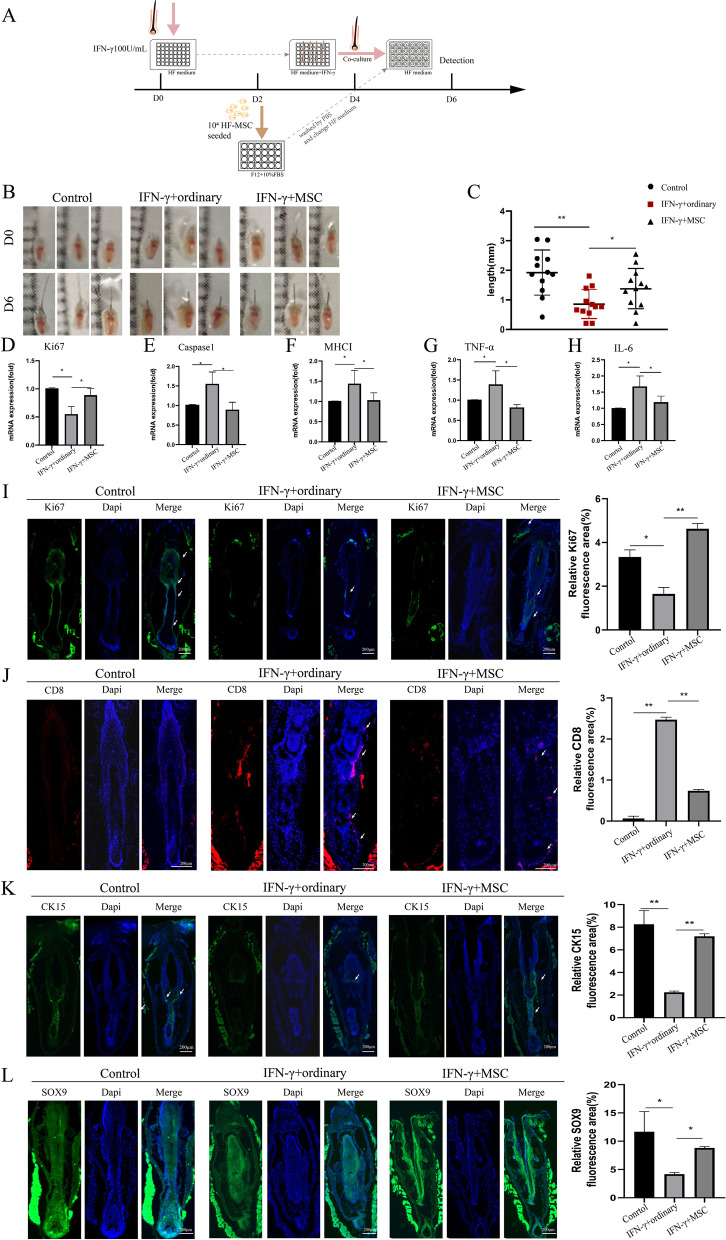Fig. 3.
Co-culture with HF-MSC suppressed inflammation, increased hair shaft growth in IFN-γ treated mouse vibrissa follicles. Two groups (n = 12/group) of Mouse vibrissa follicles had been isolated and cultured with 100 IU mL−1 IFN-γ for 4 days than both groups changed HF medium and one group co-culture with HF-MSC for 2 days. And one group was cultured in an ordinary HF medium over 6 days as a control. A Illustration of co-culture with HF-MSC in IFN-γ induced mouse vibrissa follicles in vitro model. Hair shafts were measured on day 0 and day 6. B–C Co-culture with HF-MSC significantly enhance hair shaft length (n = 12). D–H The mRNA transcript levels of Ki67, caspase1, MHC I, TNF-α, IL-6 in mouse vibrissa were examined using qRT-PCR on day 6, expression levels of those mRNA were normalized with GAPDH. I–L Immunofluorescence staining on day 6 of mouse vibrissa follicles (bar = 200 μm), co-culture with MSC increased Ki67 expression (green) (I), and suppressed CD8 expression (red) (J). IFN-γ intervention reduced CK15 (K) and SOX9 (L) markers expression levels, HF-MSC treatment reversed the reduction of those two markers. Relative fluorescence areas were averaged from 6 to 8 fields. The results were expressed as the Mean ± SD, *p < 0.05

